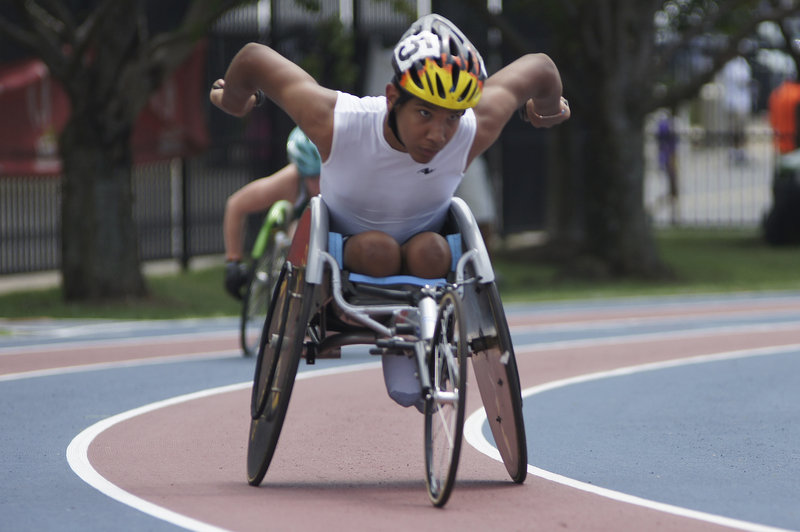Breaking new ground, the U.S. Education Department is telling schools they must include students with disabilities in sports programs or provide equal alternative options. The directive, reminiscent of the Title IX expansion of athletic opportunities for women, could bring sweeping changes to school budgets and locker rooms for years to come.
Schools would be required to make “reasonable modifications” for students with disabilities or create parallel athletic programs that have comparable standing as mainstream programs.
“Sports can provide invaluable lessons in discipline, selflessness, passion and courage, and this guidance will help schools ensure that students with disabilities have an equal opportunity to benefit from the life lessons they can learn on the playing field or on the court,” Education Secretary Arne Duncan said in a statement announcing the new guidance on Friday.
Federal laws, including the 1973 Rehabilitation Act and the Individuals with Disabilities Education Act, require states to provide a free public education to all students and bans schools that receive federal funds from discriminating against students with disabilities. Going further, the new directive from the Education Department’s civil rights division explicitly tells schools and colleges that access to interscholastic, intramural and intercollegiate athletics is a right.
“This is a landmark moment for students with disabilities. This will do for students with disabilities what Title IX did for women,” said Terri Lakowski, who led a coalition pushing for the changes for a decade. “This is a huge victory.”
Education Department officials emphasized they did not intend to change sports’ traditions dramatically or guarantee students with disabilities a spot on competitive teams. Instead, they insisted schools cannot exclude students based on their disabilities if they can keep up with their classmates.
“It’s not about changing the nature of the game or the athletic activity,” said Seth Galanter, the acting assistant secretary for civil rights at the Education Department.
It’s not clear whether the new guidelines will spark a sudden uptick in sports participation. There was a big increase in female participation in sports after Title IX guidance instructed schools to treat female athletics on par with male teams. That led many schools to cut some men’s teams, arguing that it was necessary to be able to pay for women’s teams.
There is no deadline for schools to comply with the new disabilities directive.
But activists cheered the changes.
“This is historic,” said Bev Vaughn, executive director of the American Association of Adapted Sports Programs, a nonprofit group that works with schools to set up sports programs for students with disabilities. “It’s going to open up a whole new door of opportunity to our nation’s school children with disabilities.”
“We know that participation in extracurricular activities can lead to a host of really good, positive outcomes both inside and outside of the classroom,” said Kareem Dale, a White House official who guides the administration’s policies for disabled Americans.
Dale, who is blind, wrestled as a high school student in Chicago alongside students who had full vision.
“I was able to wrestle mainly because there was a good accommodation to allow me to have equal access and opportunity,” Dale said, describing modified rules that required his competitors to keep in physical contact with him during matches.
Those types of accommodations could be a model for schools and colleges now looking to incorporate students with disabilities onto sports teams. For instance, track and field officials could use a visual cue for a deaf runner to begin a race.
Some states already offer such programs. Maryland, for instance, passed a law in 2008 that required schools to create equal opportunities for students with disabilities to participate in physical education programs and play on mainstream athletic teams. And Minnesota awards state titles for disabled student athletes in six sports.
Increasingly, those with disabilities are finding spots on their schools’ teams.
“I heard about some of the other people who joined their track teams in other states. I wanted to try to do that,” said 15-year-old Casey Followay, who competes on his Ohio high school track team in a racing wheelchair.
Current rules require Followay to race on his own, without competitors running alongside him. He said he hopes the Education Department guidance will change that and he can compete against runners.
Send questions/comments to the editors.



Success. Please wait for the page to reload. If the page does not reload within 5 seconds, please refresh the page.
Enter your email and password to access comments.
Hi, to comment on stories you must . This profile is in addition to your subscription and website login.
Already have a commenting profile? .
Invalid username/password.
Please check your email to confirm and complete your registration.
Only subscribers are eligible to post comments. Please subscribe or login first for digital access. Here’s why.
Use the form below to reset your password. When you've submitted your account email, we will send an email with a reset code.